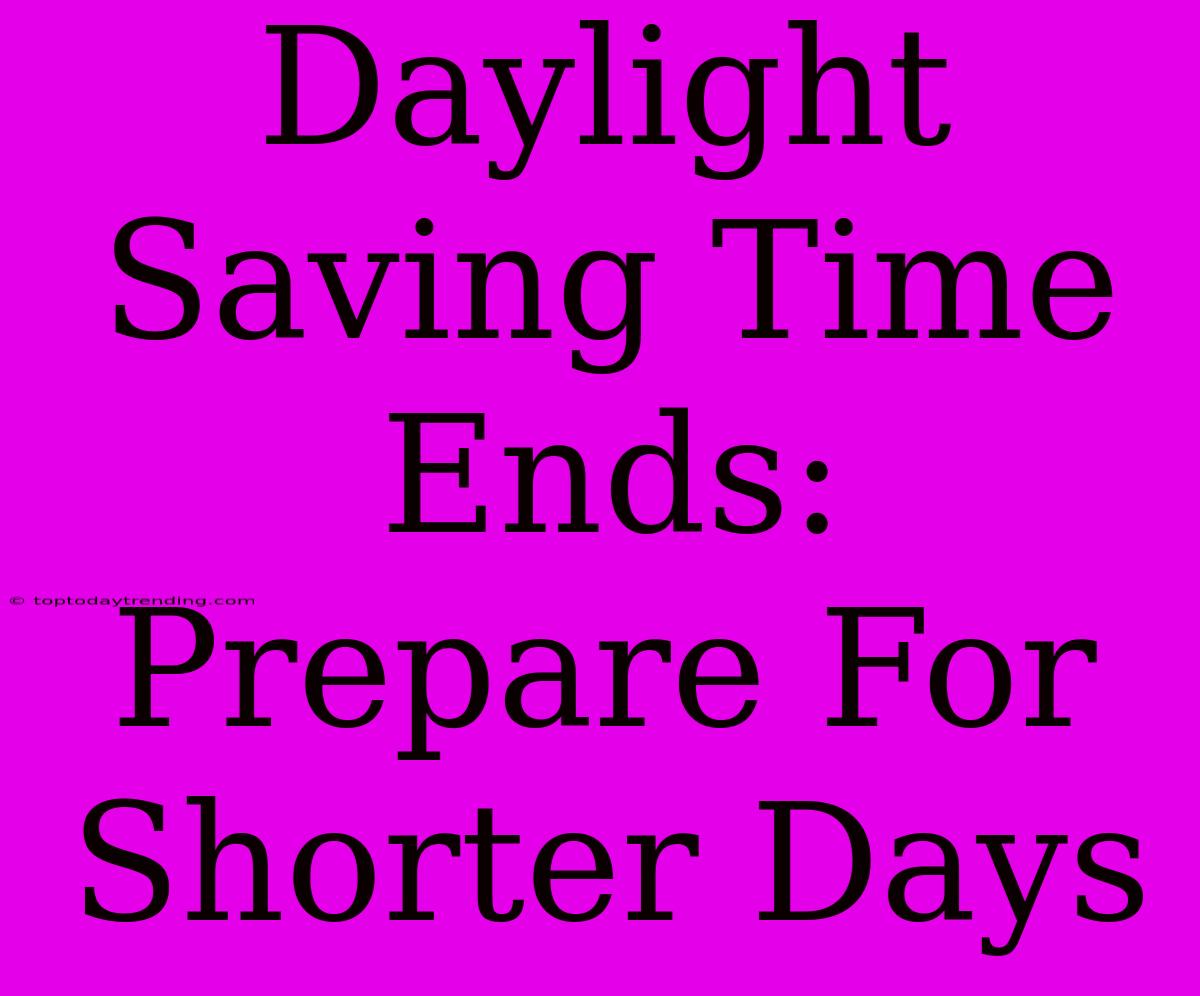Daylight Saving Time Ends: Prepare For Shorter Days
The days are getting shorter, the nights are getting longer, and the clocks are about to change again. That's right, Daylight Saving Time (DST) ends on the first Sunday of November, which means we'll be "falling back" one hour. While the extra hour of sleep might sound appealing, the change can also bring about some challenges.
Here's a guide to help you prepare for the end of DST and navigate the transition smoothly:
The Impact of Daylight Saving Time
DST was first implemented in the United States during World War I to conserve energy and daylight. Although the practice has since been adopted globally, the reasons for and against DST remain hotly debated.
Pros:
- Energy Savings: DST is thought to save energy by reducing the need for artificial lighting during evening hours.
- Increased Economic Activity: More daylight hours can lead to increased outdoor activities, tourism, and commerce.
- Improved Public Safety: Longer daylight hours can reduce crime rates.
Cons:
- Sleep Disruption: The shift in sleep patterns can cause sleepiness, fatigue, and decreased productivity.
- Health Concerns: Studies have shown potential links between DST and an increased risk of heart attacks, strokes, and other health issues.
- Negative Impact on Children: The transition can be particularly difficult for children, leading to behavioral issues and sleep problems.
Preparing for the Time Change:
To minimize the negative effects of the time change, consider the following tips:
Adjust Your Sleep Schedule:
- Start Early: Begin adjusting your sleep schedule a few days before the time change. Go to bed 15 minutes earlier each night, and wake up 15 minutes earlier each morning.
- Limit Screen Time: The blue light emitted from electronic devices can interfere with your sleep cycle. Avoid screen time for at least an hour before bed.
- Create a Relaxing Bedtime Routine: A warm bath, a good book, or meditation can help you unwind before sleep.
Make Lifestyle Adjustments:
- Plan for Darkness: With shorter daylight hours, you'll need to adjust your outdoor activities and commuting schedules. Consider using extra light sources for safety.
- Be Mindful of Energy Consumption: With less daylight, you'll likely rely on more artificial lighting. Adjust your lighting habits and be mindful of energy usage.
- Prioritize Sleep and Rest: The end of DST can take a toll on your energy levels. Make sure to get enough sleep and rest during this transition period.
The End of Daylight Saving Time: A Time for Reflection:
The end of DST is a reminder of the changing seasons and the cyclical nature of life. It's also a time to reflect on our relationship with time and how we use it.
As we adjust to the shorter days and longer nights, let's embrace the shift with a sense of peace and gratitude. This time of year offers an opportunity to slow down, reconnect with loved ones, and appreciate the beauty of the changing seasons.

